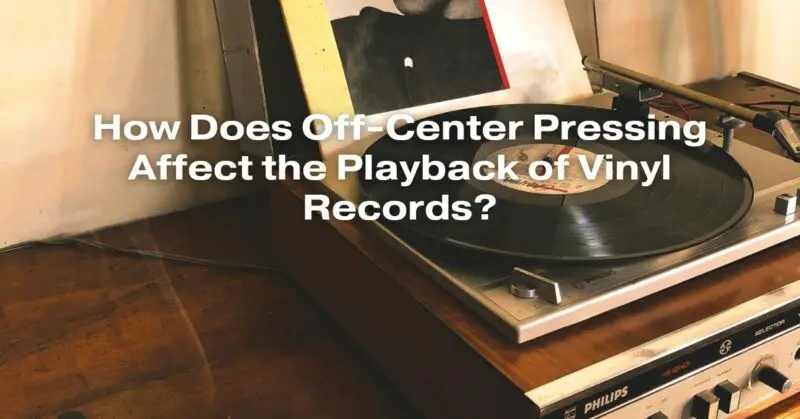Vinyl records have experienced a resurgence in popularity, with audiophiles and music enthusiasts appreciating the warm, authentic sound they offer. However, vinyl records are delicate, and even minor imperfections can significantly affect their playback quality. One such imperfection is off-center pressing, a phenomenon that has intrigued collectors and researchers alike. This article delves into the intricacies of off-center pressing and its impact on the playback of vinyl records.
Understanding Off-Center Pressing
Off-center pressing occurs during the manufacturing process when the spindle hole, which allows the record to rotate on a turntable, is not perfectly aligned with the grooves containing the audio information. This misalignment causes the record to wobble as it spins, leading to irregular playback. While modern manufacturing techniques have reduced the occurrence of off-center pressing, vintage and rare vinyl records are often susceptible to this issue.
Impact on Playback Quality
Off-center pressing can have several noticeable effects on the playback of vinyl records:
- Pitch Instability: The pitch of the music may fluctuate as the needle moves inward and outward due to the off-center rotation. This fluctuation can create an unpleasant listening experience, especially for audiophiles with a keen ear for pitch accuracy.
- Tracking Issues: Turntable needles, also known as styli, are designed to follow the grooves accurately. Off-center records can cause the stylus to move erratically, leading to tracking issues. This can result in distortion, skipping, or even damage to the stylus and the record itself.
- Imbalance in Stereo Sound: Vinyl records often have stereo information encoded in the grooves. Off-center pressing can cause imbalances in the stereo sound, affecting the separation between the left and right channels. This imbalance can compromise the intended listening experience, particularly for albums where stereo effects are a crucial element of the music.
- Uneven Wear: Off-center records can cause uneven wear on both the stylus and the grooves. The constant lateral movement of the stylus can wear out specific sections of the grooves faster than others, reducing the overall lifespan of the record and stylus.
- Difficulty in Cueing: DJs, in particular, face challenges when cueing off-center records. Cueing, the art of precisely positioning the stylus at the desired starting point on the record, becomes challenging when the record wobbles. This difficulty can affect the seamless mixing of tracks during DJ performances.
Mitigating Off-Center Pressing Issues
While off-center pressing remains a concern for vinyl enthusiasts, there are techniques to mitigate its impact:
- Careful Inspection: When purchasing vinyl records, especially vintage ones, careful visual inspection of the spindle hole can help identify off-center pressing before buying.
- Upgraded Turntable Equipment: High-quality turntables with adjustable tonearms and advanced tracking systems can better handle the eccentricities of off-center records. Investing in such equipment can enhance the playback experience.
- Professional Adjustment: Turntable enthusiasts can seek the expertise of professionals to adjust the turntable setup, ensuring that the stylus accurately tracks the grooves despite off-center pressing.
Conclusion
Off-center pressing remains a challenge for vinyl collectors and enthusiasts, impacting the overall playback quality of records. While modern manufacturing techniques have reduced the occurrence of this issue, vintage and rare records are still susceptible. Understanding the effects of off-center pressing and employing appropriate techniques for inspection and playback can help preserve the charm of vinyl records and provide a more enjoyable listening experience for audiophiles around the world.

